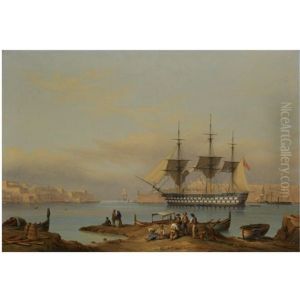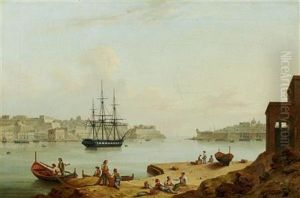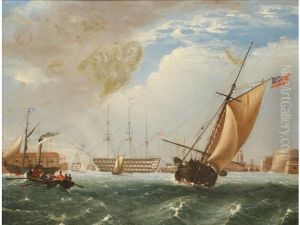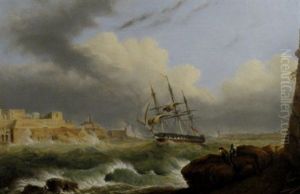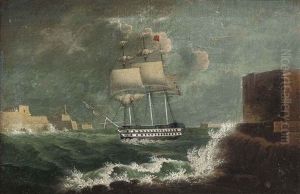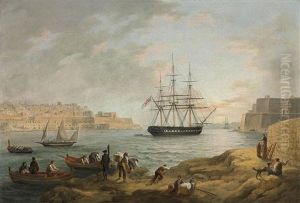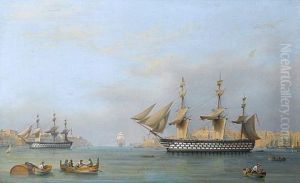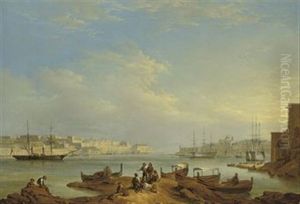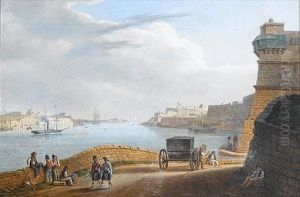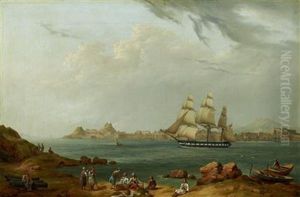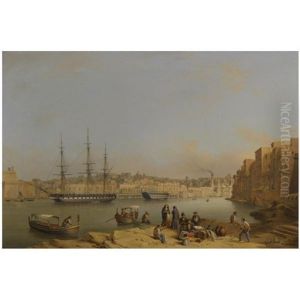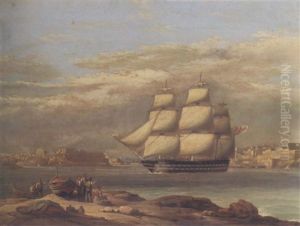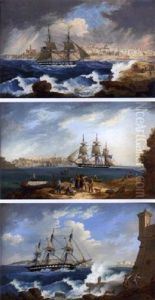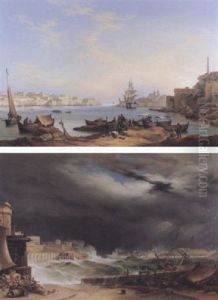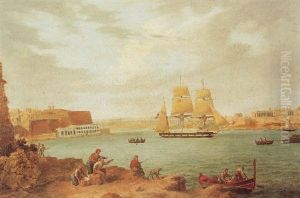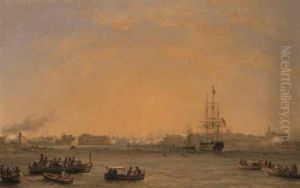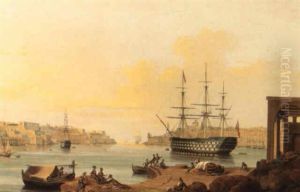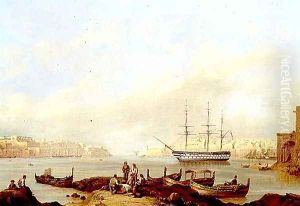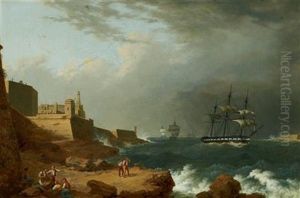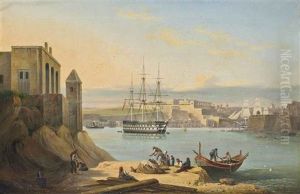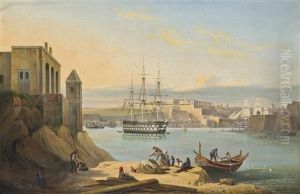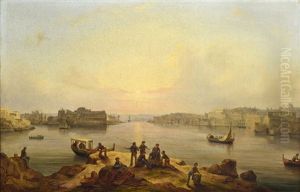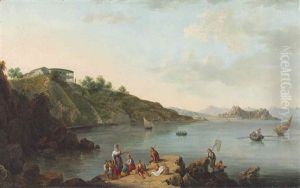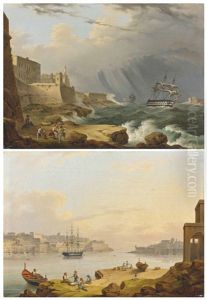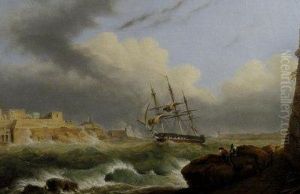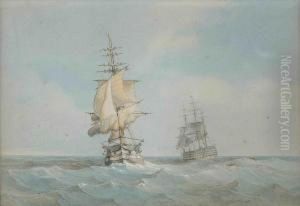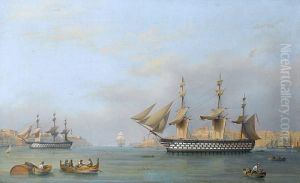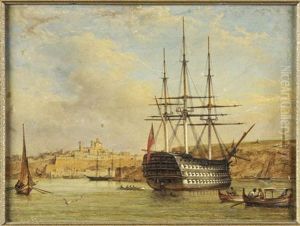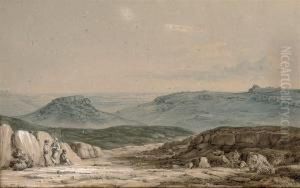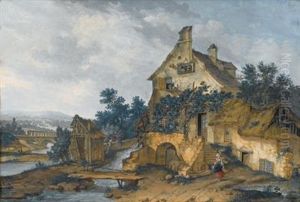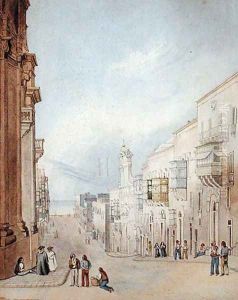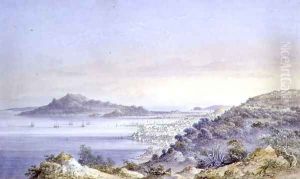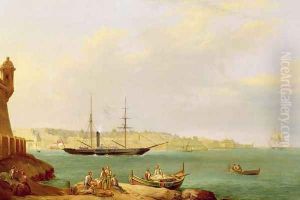John or Giovanni Schranz Paintings
John (or Giovanni) Schranz was a notable artist born in 1794 in Valletta, Malta, into a family with a strong artistic tradition. His father, Anton Schranz, was a respected painter, and his brother, Anton Schranz Junior, also pursued a career in art. This familial environment undoubtedly influenced John Schranz and contributed to his development as an artist.
Educated in the arts from a young age, Schranz benefited from the vibrant cultural scene of Malta and the Mediterranean. He was particularly known for his marine paintings and landscapes, which often depicted scenes from around the Mediterranean Sea. His works demonstrated a keen understanding of naval architecture and the dynamics of the sea, a testament to the time he spent studying and observing coastal environments and maritime activities.
Throughout his life, Schranz traveled extensively, which allowed him to broaden his artistic perspective. He ventured to different parts of Europe, including the United Kingdom, where his work was well-received. In England, Schranz's paintings catered to the tastes of the British gentry, who appreciated his detailed and romanticized portrayals of maritime life and exotic landscapes.
John Schranz's style was characterized by its detailed realism and the use of light to create atmospheric effects. Like other artists of the period, he was influenced by Romanticism, which is evident in the dramatic and often sublime treatment of his subject matter. His works were not only artistic expressions but also historical documents that captured the spirit of the age of sail and the beauty of the Mediterranean region.
Schranz continued to paint throughout his life, contributing significantly to the maritime and landscape genres of the 19th century. His legacy lasted beyond his death in 1882, influencing Maltese and European art. His works remain a testament to his skill and are featured in various collections, both in Malta and internationally, serving as a window into the Mediterranean's past and the maritime history of the era.
